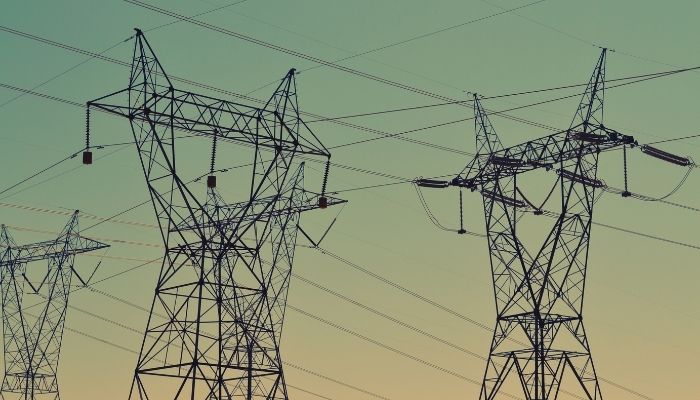Time to conserve energy on a national level
The idea that ‘energy conserved is better and cheaper than energy produced or purchased' has proven to be true
February 16, 2022

The idea that ‘energy conserved is better and cheaper than energy produced or purchased’ has proven to be true, especially due to rising energy prices, supply uncertainties and climate change effects.
In the West, the movement for energy conservation, efficiency, self-reliance and renewable energy started in the backdrop of the 1973 oil crisis. Since then, remarkable changes have occurred in the energy sector. Earlier, energy intensity – energy elasticity of the GDP – used to be more than one which means that to increase the GDP by one percent, an 1-1.5 percent increase in energy supply or consumption was required.
Today, in most countries, this index is 0.5, and, in some economies, it is even negative. This means that the growth rate in energy conservation and efficiency is faster than the growth rate of the economy. But it is not true for developing countries like Pakistan due to a variety of factors, including poverty, low education and technology. The sensitivity of the issue, however, is increasing among government policies and the people.
Energy is used in all parts of human life. A wide variety of sectors, users, producers and traders are involved and directly affected by the energy sector. There are, however, some limited number of areas which consume the bulk of energy, which makes the job of achieving energy conservation and efficiency relatively easier.
Due to market and trade reasons – and not any indigenous effort, many improvements have taken place, especially in imported items. Today’s cars are more than four times fuel efficient than those of the 1980s. And with electric vehicles (EVs), efficiency is likely to increase even more. The revolution in the lighting sector came through LEDs. Also, the latest computer and TV screens are many times more efficient than their previous models.
Split ACs are being widely used which are generally more efficient than window ACs as the former is being used for both cooling and heating purposes. Using ACs as heaters is much more efficient than the use of classic resistance heaters. Unfortunately, in this area, only the rich have switched while the poor do not have either the house or the money to benefit from it. Home electrical appliances are more efficient today, but they still have room for improvement.
Unfortunately, the building sector is the most energy inefficient sector, and not much has been done in this respect. Conservation has two sides – energy-efficient appliances and user-side efficiency. There is no use of installing energy-efficient ACs in a poorly built house with poor insulation.
The building sector has a large share of 20 percent in energy consumption. In the US, the housing sector consumes 40 percent of the country’s total energy consumption. Due to poverty and shanty houses, we may not have such a high share. There is a stock of 20 million houses, half of which are ‘pucca’ houses. There are 35 million electric consumers and seven million gas connections. New electricity connections per year average at 1.5 million – these figures give an idea of waste or conservation potential.
However, it may be noted that gas consumption in Pakistan increases in the winter largely due to heating and hot water requirements. And in the summer, electricity requirements peak due to cooling requirements provided by ACs and fans. Water consumption increases in the summer as well, leading to an increase in energy use in water pumping. This brings motor and pump energy efficiency issues to the fore.
There are some voluntary energy conservation labels and schemes like Leadership in Energy and Environment Development (LEED). The application of the LEED criterion has led to some remarkable effects of energy savings in commercial buildings – up to 50 percent savings (more than 275,000 kWh per year). Voluntary participation may be more effective than legal approaches which may eventually come in the long run. Although for some stubborn customers, a carrot-and-stick approach may also work. Market-based approaches also succeed in such cases.
Space cooling and space and water heating are the most energy-consuming and costly processes, more in terms of operating (energy) cost than in terms of capital expenditure. Both elite and middle classes indulge in wasteful investments in it. Most energy theft used – and even continues – to be due to the use of ACs, gas heaters and water geysers.
Investment in energy conservation is definitely cheaper than the cost of energy consumed otherwise. The culprit in high energy consumption is lack of insulation in our homes and commercial buildings. In the 19th century, in this part of the world, houses used to have energy conservation features like decent heights, ventilation systems and energy-insulating plasters. Roof insulation technology and materials are relatively widely available. A cheaper option – ‘white colouring of the roof’ – has also found wider acceptance. Roof insulation can be done in existing houses, offering a large potential for further savings. Wider use and the availability of better materials can make a difference.
Wall insulation is a rather difficult issue for existing buildings. However, in new construction, it is neither costly nor difficult to insulate walls. Normally, two walls are built with a cavity of three to four inches. This is required in only outer walls. There are other techniques of insulated plasters or installing insulated panels inside. The installation of insulated panels inside may be feasible in existing houses. In the US, the payback of cavity wall insulation is about three years. In Pakistan, with costly energy and lower construction cost, the payback period may be even less.
The second biggest loss of energy is through glass windows, in both winter and summer. The larger the house, the larger the windows. Glazed windows have become a norm in new buildings and refurbished homes in the West. These windows can be installed in both new and existing houses. Only outer windows have to be glazed. In these glass windows, inert gas like helium is filled to decrease heat transfer. The supply industry has developed this item but is restricted due to a low demand.
In the gas sector, solar water heaters (SWH) offer a great opportunity for energy conservation. They hardly consume any roof space as opposed to a solar PV system. The existing gas heaters and geysers are energy inefficient and are responsible for high gas bills. Gas heaters can be replaced by split ACs which offer both heating and cooling functions. For rural areas, biogas and gasifier stoves are a cheap solution and have plenty of scope.
Electric motors used in water pumps, fans, compressors and all kinds of industrial machinery are another important item. Most of their demand comes from water pumps of up to one kW capacity. There are around four hundred motor manufacturers mostly in the informal sector and are situated in Gujranwala. About 14 million motors are installed in the country, which is expected to increase to 25 million units by 2030. In terms of MW, 70 percent of the motor demand may be coming from large motors of five KW and more. However, even in the industrial sector, motor efficiency averages around 50-55 percent due to a variety of reasons which are not related to only motor quality, but there are operations and maintenance issues as well. Optimum efficiency requirements exceed 75 percent.
New products offer huge potential for boosting energy conservation and efficiency, and both large- and small-scale industries require technical input in this regard. However, in the large motor sector, industrial users need assistance. In the case of small motors, motor manufacturers need assistance. Thus, two different approaches are required to help improve the current situation.
To be continued
The writer is a former member of the Energy Planning Commission and author of ‘Pakistan’s Energy Issues: Success and Challenges’.
Email: [email protected]
Originally published in The News









